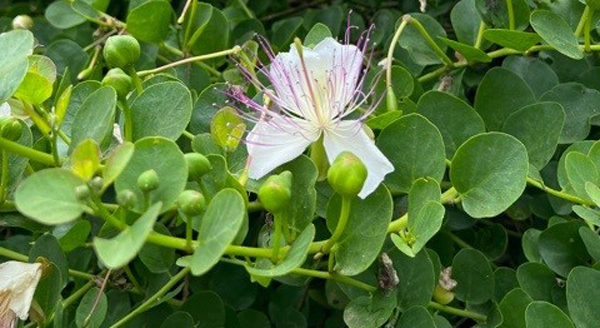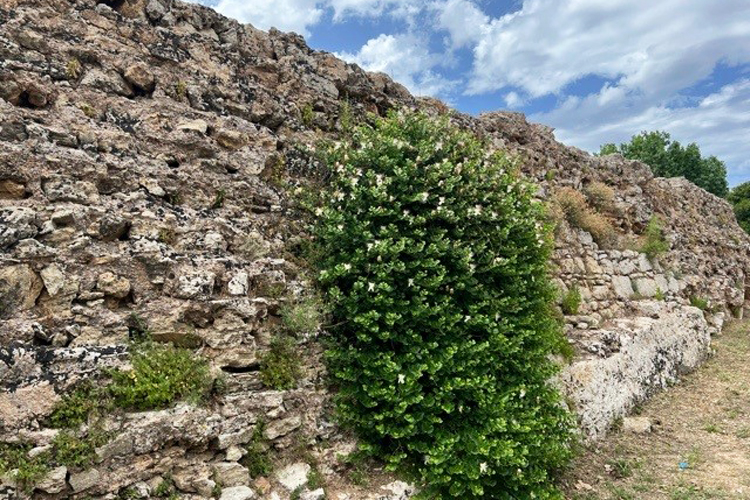Plants / Plantes
Capparis spinosa
The caper bush / le câprier épineux
Caper bush (Capparis spinosa) is also called Flinders rose. The plant is best known for the edible flower buds (capers), used as a seasoning or garnish, and the fruit (caper berries), both of which are usually consumed salted or pickled.
Le câprier épineux (Capparis spinosa) ou caprier commun est surtout connu pour ses boutons floraux comestibles (câpres), utilisés comme assaisonnement ou garniture, et ses fruits (câprons), qui sont généralement consommés salés ou au vinaigre.
Other parts of the plant are used in the manufacture of cosmetics and medicines. It is a native to almost all Mediterranean countries, but it is uncertain whether it is indigenous to the region.
Other parts of the plant are used in the manufacture of cosmetics and medicines. It is a native to almost all Mediterranean countries, but it is uncertain whether it is indigenous to the region.

Capparis spinosa prefers an arid environment and is adapted to poor soils. The base of the stem has a high root/shoot ratio, and the presence of mycorrhizae helps the uptake of minerals in poor soils. It can withstand temperatures above 40°C and strong winds but is sensitive to frost when producing new growth. It is certainly a survivor, tolerating the dry coastal ecosystems of Egypt, Libya and Tunisia.
Capparis spinosa préfère un environnement aride et s’adapte aux sols pauvres. La base de la tige présente un rapport racines/tiges élevé et la présence de mycorhizes favorise l’absorption des minéraux dans les sols pauvres. Elle peut résister à des températures supérieures à 40°C et à des vents violents, mais elle est sensible au gel lorsqu’elle produit de nouvelles pousses. C’est certainement un survivant, qui tolère les écosystèmes côtiers secs de l’Égypte, de la Libye et de la Tunisie.
It can be found growing spontaneously in wall joints of antique Roman fortresses, the Western Wall of Jerusalem’s Temple Mount, and on the ramparts of the Castell de Santa Bàrbara, in Alicante, Spain.
La plante pousse spontanément dans les joints des murs des anciennes forteresses romaines, sur le mur occidental du mont du Temple à Jérusalem et sur les remparts du château de Santa Bàrbara, à Alicante, en Espagne.

Text and photos: Mark Barnett, South Australia MGS
Additional note / Note complémentaire de Roland Leclercq:
For cultivation in the garden, there is a thornless variety, Capparis spinosa ‘Inermis’. I have one but it’s not easy to grow, you have to plant it directly into rocks or gravel. They say you need to plant three to end up with one.
Pour la culture au jardin, il existe une variété sans épines Capparis spinosa ‘Inermis’. J’en ai un mais la culture n’est pas facile, il faut le planter directement dans des cailloux. On dit qu’il faut en planter 3 pour en avoir 1 au final.
![]()
